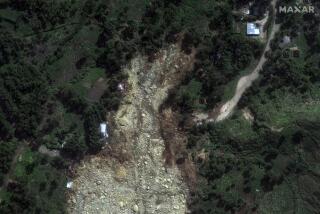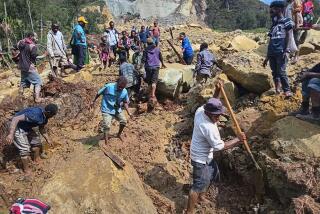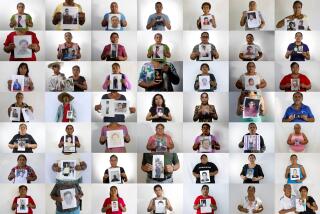China’s shift on student death toll angers parents
- Share via
BEIJING — Jiang Xujun felt the stab of his daughter’s death all over again Friday when Chinese officials acknowledged for the first time that 19,000 students perished in May’s deadly earthquake -- and then immediately backed off the estimate.
Jiang used his bare hands to dig the body of his 7-year-old daughter, Jiang Yao, from the rubble of her primary school. Since then, he has fought the government for compensation for the death and assistance in finding a new home.
The months have brought only misery. On Friday, Chinese officials added insult to Jiang’s injury.
At a news conference on preparations for the winter in the quake zone, Wei Hong, executive vice governor of Sichuan province, gave the student death toll as 19,065, nearly a quarter of those killed. The figure was immediately quoted in stories by Chinese state-run and foreign news services.
Soon, however, an officer from the provincial propaganda office said an official translation at the news conference misconstrued Wei’s remarks. He said the figure was the total number of earthquake victims who have been identified.
For many, including the angry parents of children who died when schools collapsed, the about-face spoke volumes of how Chinese officials deal with sensitive revelations: a moment of candor followed by a contradictory reversal.
A New China News Agency report of the news conference included Wei’s original remarks, but a second story on the state-run site said his estimate referred to a detailed list of identified dead and not specifically students.
A veteran reporter for the China Youth Daily said there still was confusion on whether Wei inadvertently released the real student death toll number or was misquoted.
“I don’t know whether it’s true or not,” he said. “I have been to several earthquake zones, and I only know the death toll there, but for an overall death toll, I really have no way to know.”
For months after the magnitude 7.9 quake, officials declined to offer a precise toll of the number of students who had died. The topic has raised the ire of many Sichuan residents who watched schools collapse while nearby buildings suffered little damage.
“We don’t trust the local government, they are too deceptive,” said Jiang, a 37-year-old former home renovator. “School buildings are of shoddy construction. I am afraid the real number of dead students is more than 19,000.”
Jiang said the Fuxin No. 2 school, where his daughter died, was built in 1997. A total of 127 students at the school died in the May 12 quake, including 27 of the 41 children in his daughter’s classroom. “Other teachers’ office buildings did not collapse,” he said. “The school fence walls did not collapse, even our rural buildings did not collapse, just the [classroom] building collapsed.”
Local officials have tried to quell protests from parents who have demanded an investigation of school construction. Police have been called in to silence rallies and some parents of dead or missing children say they have been intimidated or even bribed to remain silent.
A local official at the heart of the quake zone killed himself this week, the second such suicide in two months, state news media said.
On Friday, Wei estimated that 1,300 schools had been rebuilt or were under construction. He said 200,000 homes had been rebuilt and work was underway to repair 685,000. Still, 1.94 million homes need to be rebuilt or repaired, he said.
Jiang is among those waiting for home repairs.
“The local government did not meet its commitments to us,” he said. “We still have to borrow money from friends and relatives; we have to live our lives. Our [home] is not suitable to live, there are splits, winter is coming. It’s very cold.”
Along with the chill of winter, Jiang shivers over the loss of his fifth-grader. “Watching others’ children bounce lively -- they are lovely like flowers -- it’s painful,” Jiang said.
“My wife suffers much more.”
--
More to Read
Sign up for Essential California
The most important California stories and recommendations in your inbox every morning.
You may occasionally receive promotional content from the Los Angeles Times.














